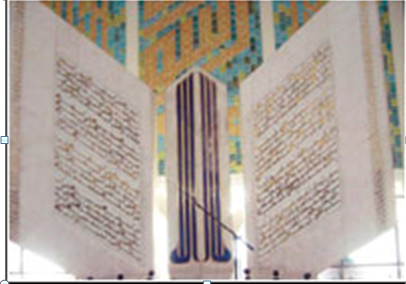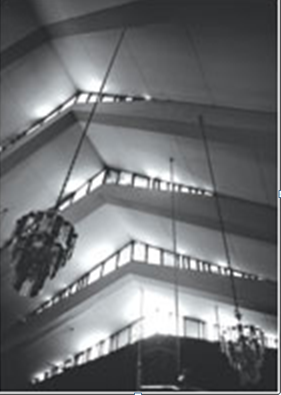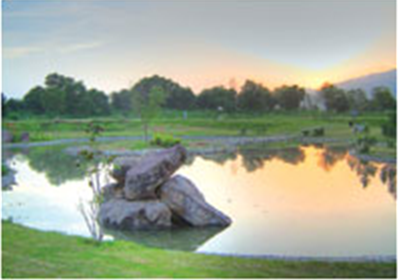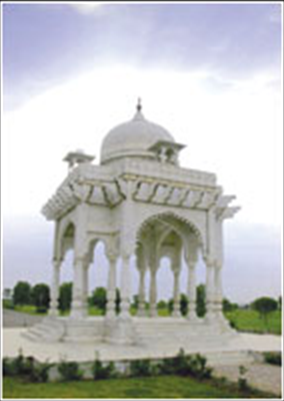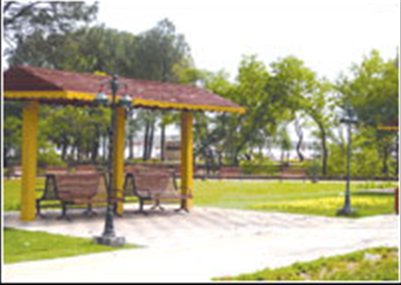Islamabad: A-O
This is a collection of articles archived for the excellence of their content. Readers will be able to edit existing articles and post new articles directly |
Contents |
Islamabad: 1
Islamabad: Faisal Mosque
Faisal Mosque: Breathtakingly Beautiful
By Hafsah Sarfraz
What would be a place where the sky would be clear, greenery everywhere, hills and mountains showing from the roofs, great weather, and tall buildings yet beautiful places? That would have to be Islamabad — the beautiful, the capital of Pakistan, the city of gardens and greenery, the city of beautiful places and the city of peace lovers.
Other than beautiful places and its greenery, Islamabad is also known for the national mosque of Pakistan: Faisal Mosque. Clearly, none of us need an introduction for it, but let’s get to know a little about its history. It all started in 1966 when King Faisal Bin Abdul Aziz of Saudi Arabia suggested the construction of a mosque on his visit to Islamabad. A year later, a competition was held in which architects from 17 countries submitted 43 proposals. Renowned Turkish architect Vedat Dalokay’s design was selected, after which construction started in 1976. This project was funded by Saudi Arabia and hence named after King Faisal. Faisal Mosque was completed in 1986, 20 years after its suggestion, which speaks a lot about how well it is made.
Superbly sited at the foot of the Margalla Hills, the enormous Shah Faisal Mosque is an important landmark of Islamabad. It is spread over 1,89,705 square metres with 88-metre high minarets and 40-metre high main prayer hall. It can accommodate 300,000 worshippers at one time.
I never considered it a place worth visiting on a Sunday afternoon or a holiday but my perception was proved wrong when I visited it. It is a beautiful mosque, the most beautiful I have seen as yet. Its interior is even more attractive than its exterior, with golden carvings on the walls and a huge stone-made Quran, which has ayats carved on it. It looks quite real if you glance at it from a distance. The enormous golden chandelier in the middle of the mosque looks absolutely remarkable! One feels like bowing down and praying to the Almighty after seeing this beautiful mosque. Amin Gulgee made a large crescent and star in copper plate for the Faisal Mosque, and produced calligraphy in stone inside the mosque. That large crescent is visible from a distance as well.
We often tend to choose picnic spots, parks and fun places while deciding to spend a holiday, but I believe being citizens of Pakistan, we all should visit Faisal Mosque. It gives us a sense of pride to be associated to our homeland. For children it’s even more important to visit such places to get acquainted with their culture, heritage and history!
There’s so much more that deserves a mention but I have to limit myself. In a nutshell, the interior is just so good that one feels like never leaving the place at all. This place is a must visit for all those who haven’t been here before. It is a great place to visit on an evening when the weather is nice. Its views are simply breathtaking, make sure you visit it whenever you are in Islamabad.
Islamabad: Fatima Church
Appreciating Fatima Church
Text And Photos By Ali Khawaja
Fatima Church is a stunningly modern structure — a true marvel of architecture — located in the heart of Islamabad. Its gaping triangular façade and a roof that undulates into sequentially sharper and taller triangular forms merges remarkably into the rising background of the Margalla Hills. The continuity of concrete between the tapering foundations and lofty roof makes it seem like the building is chiselled out like an art form from a giant concrete block.
Fatima Church eschews ornamentation and is a model of simplicity. And though almost three decades old it looks new — the hallmark of modern architecture. The three-point geometry shaping the Church alludes to the Holy Trinity, reflecting a deep understanding of historic church design by a Muslim architect — and symbolic of a nascent pluralism.
Appreciation of the built environment is a feature of a mature society. The majesty of the Mughal Empire is apparent in its palaces, forts and mosques. Several of these architectural relics are on the UN’s World Heritage list, and revered around the world as lasting evidence of glorious achievements. The Mughal monuments are indeed a source of pride for Pakistanis, but they were built over 400 years ago. We need to revive our architectural creativity; and we need to appreciate our contemporary architectural achievements if we wish to move forward as a culturally mature society.
Facing Street 55 from the southwest corner of Kaghan Road in Islamabad, Fatima Church is a building to cherish and was designed by Anwar Said. The rolling Margalla Hills form the northern backdrop and perhaps inspired Said to design a roof that undulates similarly. The building has undergone numerous changes but its unique elegance is preserved.
The church façade is a gaping isosceles triangle cast in concrete. Its overhang shelters the crowd that gathers during church events along the base of the triangle between the driveway and gardens. Said uses basic geometric forms in his designs. The rising peaks of each triangular form lead your eyes beyond the façade and above the Margallas to two concrete beams that reach out diagonally and towards each other from opposite sides of the building. The beams meet about ten feet above the roof’s highest point and hold up the church cross, set against the sky from any viewpoint.
The church grounds are organised into three parts: the church, its gardens and the Father’s residence and offices. A driveway wraps around the southern edge of the church and leads to the Father’s residence and offices. The gardens lie along the northern edge of the church grounds and run along the residence and offices that stretch beyond the back of the church. Stained glass windows suitably occupy the gaps between the cascading forms allowing a festive interplay of light and shadow inside the main hall below. The design of the glass is less figurative as is generally common in churches, and is arranged into bright vertical stripes of red, blue and yellow. ________________________________________
The church façade is a gaping isosceles triangle cast in concrete. The rising peaks of each triangular form lead your eyes beyond the façade and above the Margallas ________________________________________
The sculptural roof defines Fatima Church’s exterior form and shapes the main hall underneath. Its triangular geometry unfolds with an ease that contrasts sharply with its firmly anchored base — massive concrete foundations that taper upward for two stories to support the weight of the roof structure. Floor-to-ceiling windows illuminate the main hall and another directly below.
Father Rahmat endearingly described to me the main hall as a space that “helps visualise our prayers reaching Heaven!” The three entrances on the façade, which is a common feature of churches in the world, lead to this zenithal space. The ceiling gradually rises from the entrance and is almost three stories tall at its highest point directly above the altar. Fans hang from the cascading ceiling of the hall. Members of the congregation complained to me of lack of proper ventilation. Indeed, there are no openings in the ceiling, and without air-conditioning it is uncomfortable inside the church when it’s packed with 500 people.
Islamabad’s summer temperatures are too searing to be compensated fully by aesthetic joy. But in bearable temperatures, the Church’s aesthetics raises the “emotional exuberance” of the devotees, which is one purpose of Church architecture, that is, to feel close to God.
Two significant changes have taken place since the church was built. Poor construction techniques caused the roof to leak. The subtle vertical strips that lay gracefully along the roof and highlighted its undulation have been covered with generic red shingles that jarringly disrupt the roof’s skyward tempo with thick, horizontal lines.
The second change goes beyond design, signifying the diminishing value of tolerance in our society: an eight-foot tall security wall partially hides the church and its grounds, supplemented with a guardhouse and a large metal gate. They were built in response to the 2002 bombing of St. Thomas Church in Islamabad’s Diplomatic Enclave. Not unlike the walls that ghetto the city’s Christian communities into slums, the church’s security walls are a lamentable barrier in the progress of pluralism that produced Said’s design three decades ago — a jewel in Islamabad’s otherwise drab urban fabric and a source of pride for Pakistan. ________________________________________
Ali Khawaja has studied at Columbia University and New York University’s Tisch School of the Arts. He is presently studying at Harvard University’s Graduate School of Design.
Top: Exterior view of the Church Left: Sculptural roof from inside
Islamabad: Fatima Jinnah Park
By Hafsah Sarfraz
Islooites must already be aware of the Fatima Jinnah or F-9 Park as this is the biggest and the most beautiful park in Islamabad, but those living outside Islamabad might not know about it. An entire sector of Islamabad, the F-9 sector, is dedicated to this park. The park is considered one of the largest (in terms of covered area) in South East Asia. It was named after the revered Madr-i-Millat (Mother of the Nation) Miss Fatima Jinnah — younger sister of the founder of Pakistan.
Located near sector F-10, the F-9 Park is a great attraction to people of all ages: infants, kids, teenagers, adults and the old ones too. If you are wondering, why? Let me tell you it is because of the different activities around and in it. The lush green lawns and the beautiful flower beds of F-9 Park make it a beautiful and peaceful place to go and enjoy the soothing Isloo air for the adults and old people. Youngsters and teenagers on the other hand often visit it due to another major attraction: an international fast food restaurant! Furthermore, Hotshots (Megazone) Bowling Alley is also located just near this park which is another reason why the teenagers want to visit the place! Infants and kids on the other hand enjoy the park because of the swings over there.
The development of Megazone complex is a major attraction to the F-9 Park. Megazone complex is a well built area which has a lot to offer including the sports area which comprises a standard length swimming pool, table tennis tables and snooker. While the more contemporary facilities include bowling bowl, arcade games, laser tag and other small games. There is a take away and dining area as well for people to come and eat. And lastly there is an assortment of different shops for clothes, DVDs and other accessories. So basically the Megazone is a multipurpose and great addition to the Fatima Jinnah Park.
One of the newest additions to the park include a complete children’s zone with rides that are the first of their kind in Pakistan! This makes the F-9 Park a popular attraction among the younger lot too.
Furthermore, the presence of a well built white marbled monument makes the park look even more beautiful and special! It isn’t very huge, not too small either but looks great in the middle of the park adding to the charm of the place!
One can see the entire Islamabad from this park, even though it’s not at height. The stunning Faisal Mosque is clearly visible from this park and so are the hills and mountains near Islamabad. The green lawns and bright flowers make the park look so naturally beautiful that one never feels like coming back from that peaceful place! It’s a great place to go for a walk with your loved ones and talk your heart out with them.
All in all, it is a must visit place for all those who come to Islamabad once in a while, and an almost daily visit for those who live near it. Nothing relaxes you more than a cup of coffee or tea at the F-9 park and nothing refreshes you more than a good jog on the tracks of this park! So what are you waiting for? Go and visit, if you haven’t as yet. This visit will be the one that you’ll remember always.
Islamabad: Ojhri Camp disaster, 1988 (history)
20 years on, Ojhri Camp truth remains locked up
By Amir Wasim
ISLAMABAD, April 9: Twenty years have passed but the images of destruction caused by the Ojhri Camp disaster are still fresh in the minds of many residents of Rawalpindi and Islamabad.
Over 100 men, women and children were killed and many times more were wounded by the missiles and projectiles which exploded mysteriously and rained death and destruction on the twin cities on this day in 1988.
Physical scars of the tragedy may have healed but the nation is unaware till this day what, and who, caused that disaster and why. An investigation was conducted into the disaster but, like in the case of all other probes into national tragedies, its report was not made public.
The then prime minister Mohammad Khan Junejo appointed two committees, one military and the other parliamentary, to probe the military disaster. His action so infuriated military dictator Gen Ziaul Haq that he dismissed his handpicked prime minister on May 29, 1988 - the main charge being that he failed to implement Islam in the country.
While the parliamentary committee, headed by old politician Aslam Khattak, went out with the Junejo government, the military committee under Gen Imranullah Khan submitted its report before the government’s dismissal.
Subsequent governments of prime ministers Benazir Bhutto and Nawaz Sharif which followed Gen Zia’s fiery death in a mysterious plane crash on August 17, 1988, also kept Gen Imranullah Khan’s findings under covers.
Some opposition members called for making it public during the last five years of Gen Pervez Musharraf’s military rule but the PML-Q government took the position that it would not be “in the larger national interest”.
Neither political observers expect the PPP and the PML-N doing so even when they have been swept into power again by the people and run a coalition government.
Interestingly, when contacted, leaders of both the parties agreed that the Ojhri Camp inquiry report should be made public but refused to commit to do so.
Junejo’s defence minister Rana Naeem Ahmed had told Dawn in an interview last year that he had received the report but said it did not fix responsibility on any one and declared the huge disaster an accident.
Even then the ISI seized it in a raid on his office the day after the Junejo government was dismissed, he claimed.
“They returned all my belongings, except the briefcase that contained the report,” he said, disclosing that the report was inconclusive and focused just on the causes of the blast.
It was a bright and sunny morning on April 10, 1988, when the citizens of Islamabad and Rawalpindi were startled by huge explosions and swishing sounds as if fireworks were going off.
Thousands of missiles and projectiles soon started raining down on the two cities the Ojhri Ammunition Depot, situated in the densely-populated Faizabad area, blew up.
Officially the death toll was 30, but independent estimates put the figure much higher. Prominent among those killed was a federal minister Khaqan Abbasi whose car was hit by a flying missile while he was on his way to Murree, his hometown.
His son accompanying him was hit in the head. He went into deep coma and died some two years ago after remaining on artificial respiration for 17 years.
The Ojhri Camp was used as an ammunition depot to forward US-supplied arms to Afghan Mujahideen fighting against the Soviet forces in Afghanistan. There were reports that a Pentagon team was about to arrive to take audit of the stocks of the weapons and that allegedly the camp was blown up deliberately to cover up pilferage from the stocks.
Some reports said that Ojhri Camp had about 30,000 rockets, millions of rounds of ammunition, vast number of mines, anti-aircraft Stinger missiles, anti-tank missiles, multiple-barrel rocket launchers and mortars worth $100 million in store at the time of blasts that destroyed all records and most of the weapons thus making it impossible for anyone to check the stocks.
Prime minister Junejo had promised to the National Assembly that the inquiry report would be made public and the guilty would be punished but was sacked by Gen Zia.
Senior members of the PPP and the PML-N admit that their governments in the past made no serious effort to make the report public.
A PPP member however claimed that the second Benazir Bhutto government did attempt to do that but failed due to resistance from the “concerned quarters”. There are some elements in the Charter of Democracy, signed by the PPP and the PML-N, which could be pursued to make such reports public, he said.


